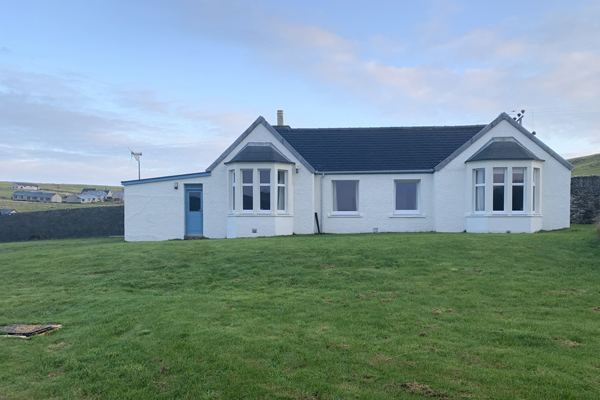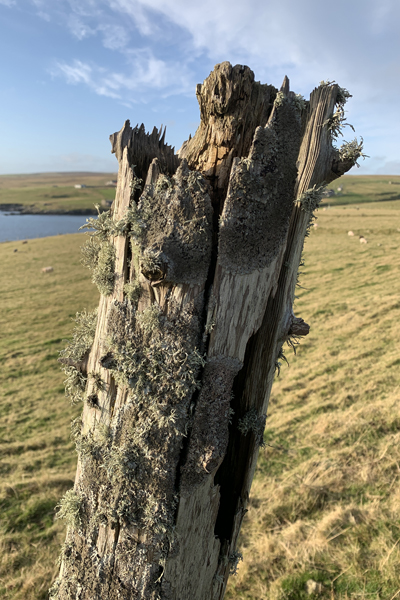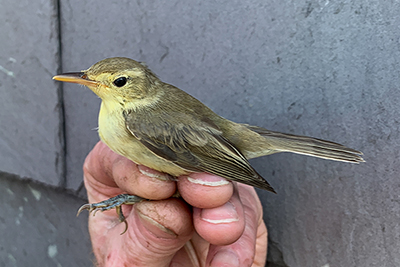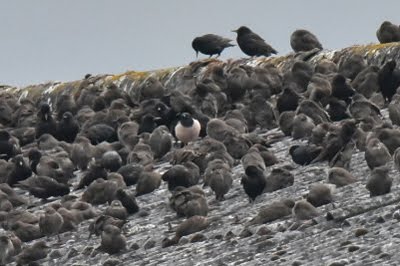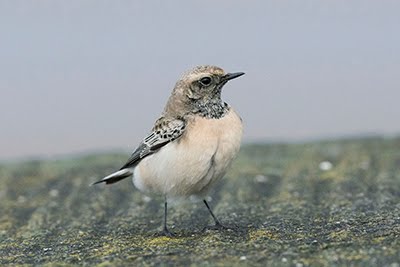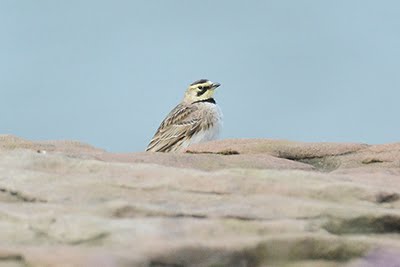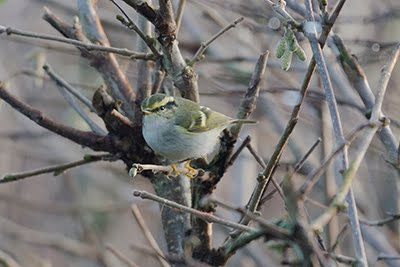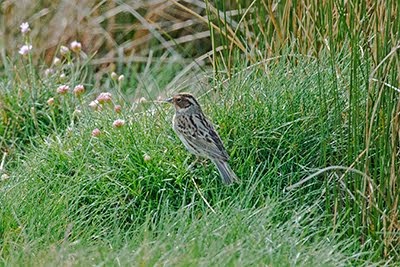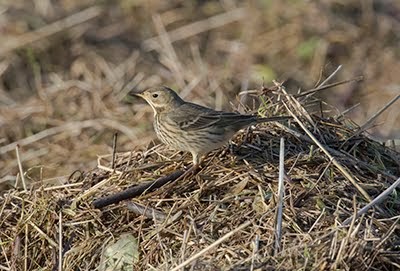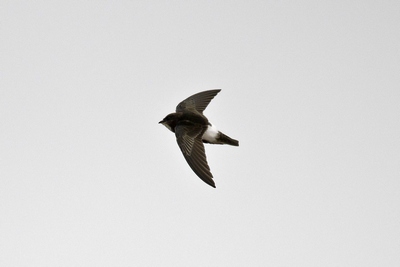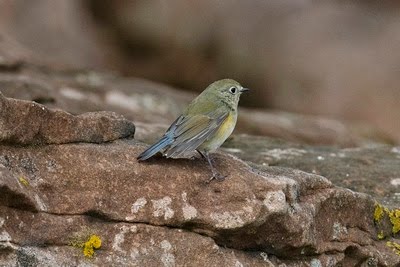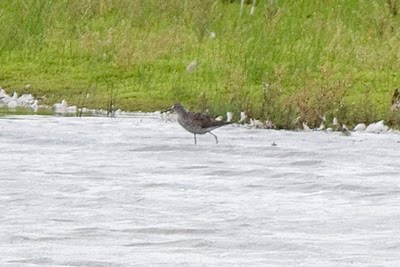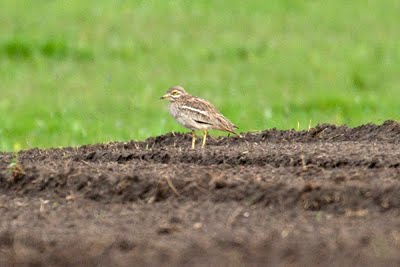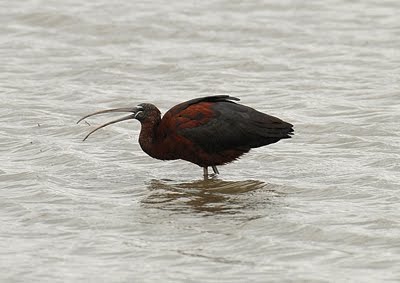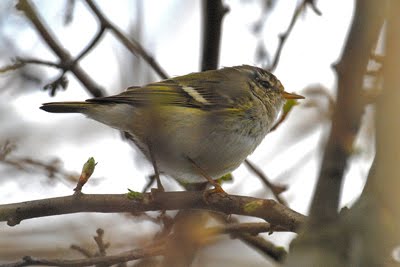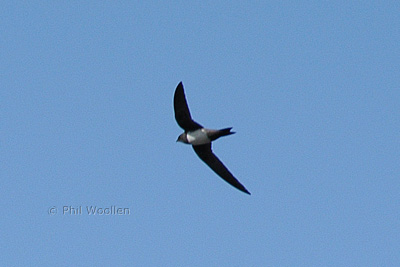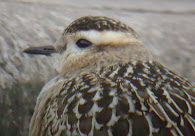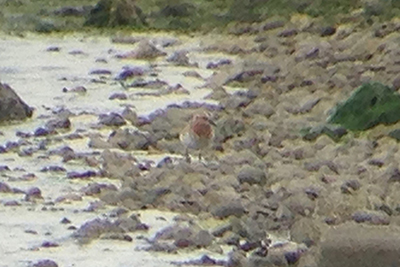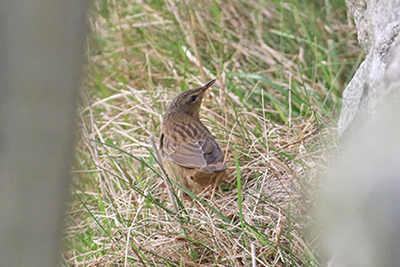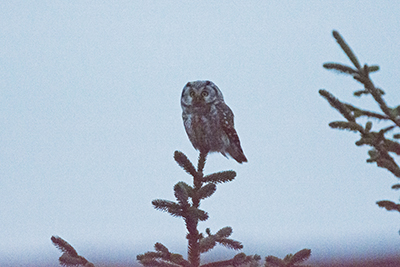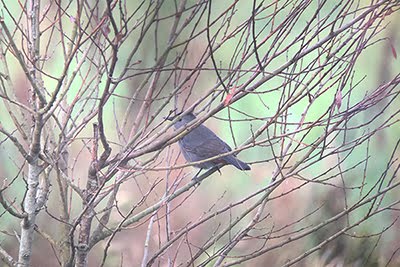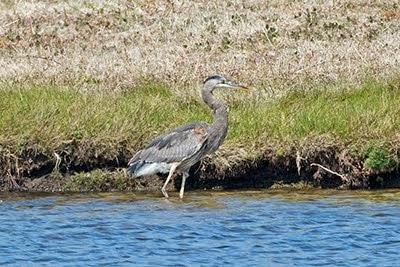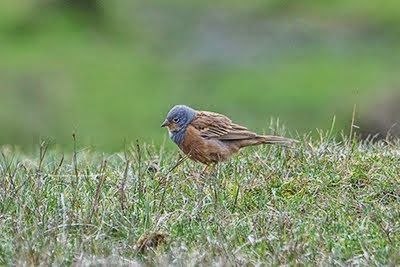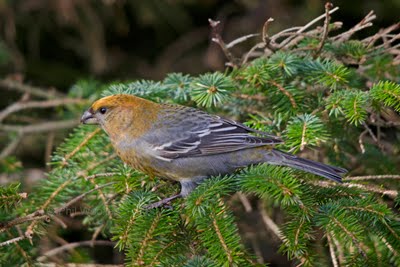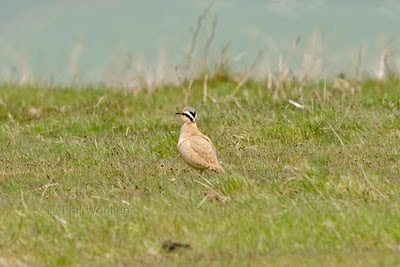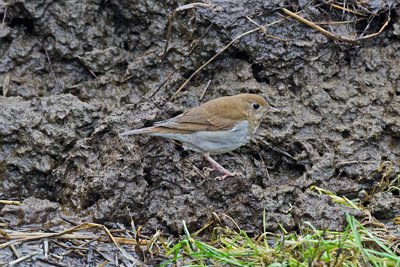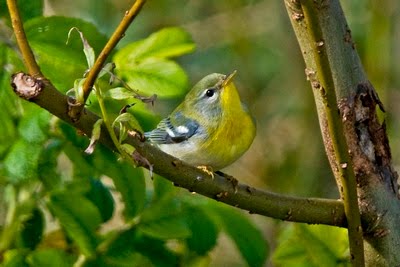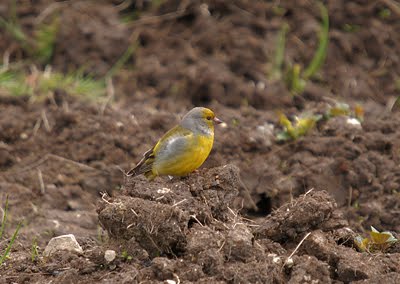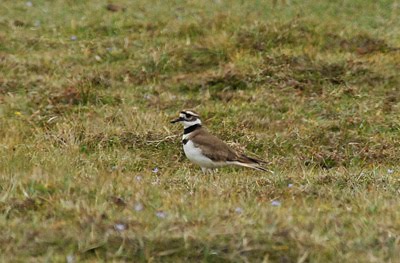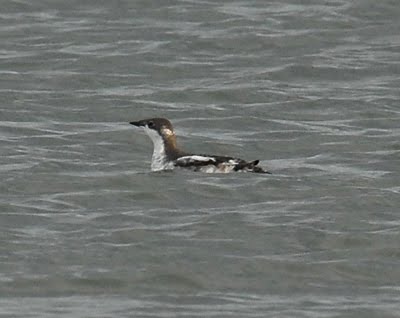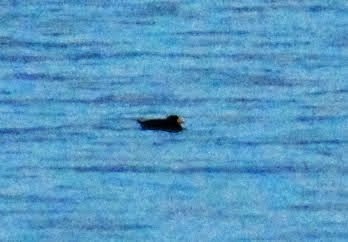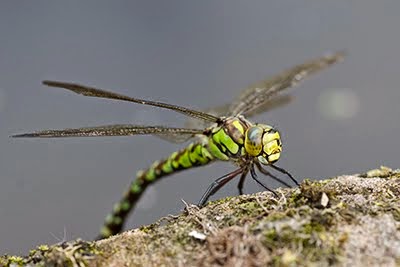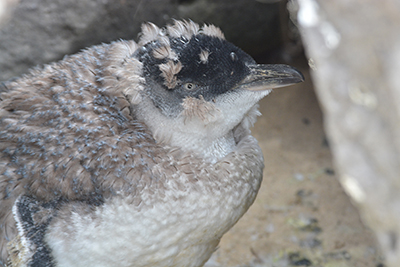Unfortunately Loganair changed our flight so rather than flying directly from Manchester to Sumburgh were were rerouted via Inverness. When we arrived at Inverness we were told our flight was delayed until the next morning due to air traffic control restrictions at Sumburgh! The airline staff quickly sorted out accommodation for us and taxis to a nearby hotel. This meant we arrived at Sumburgh almost 15 hours alter than we should have done so didn't have any time to do any birding before having to head north to Lerwick and a big shop at Tesco's before heading for the ferry to Yell and then ultimately to Fetlar. We also brought a 25 kg bag of bird seed intending to seed the area in front of our accommodation hoping to attract in a rare bunting or migrant finches.
The trip started well when, as we were waiting for a ferry from Toft, A Hoopoe flew over the car pursued by 2 Rock Pipits. Whilst waiting for the ferry we also got to meet Fetlar based birder Paul Macklin and exchanged phone numbers so we could keep in contact.
There are only a few birding hotspots on Fetlar and our first afternoon was spent exploring these areas and familiarising ourselves with the terrain. Feal Burn was within walking distance and we got into the routine of checking it early morning, lunchtime and evening!
Another hot spot was the remote farm of Peter Coutt's at Everland. We found some good birds around this area including an eastern looking Lesser Whitethroat, Redstart, Ring Ouzel and numerous thrushes including 2 Ring Ouzels.
Above: Mark checking the dockens at Everland.
Below: ruined house and crofts at Everland. I can't get over the straightness of that block work on a building probably 2-300 years old
Below: Eastern type Lesser Whitethroat, Everland
Below: Redstart, Everland
The weather was incredible. With heavy rain back home in Cheshire we were blessed with sunshine - apart from one day when, to use the local dialect, it was 'dreich'
Above: view from top of Feal Burn on a dreich day.
Birds arrived during the day and quite often we'd check an area in the morning to find nothing but on checking again later birds had arrived. At certain times birds were literally dropping out of the sky. On one memorable occasion we had a rare shower whilst checking Feal Burn and 8 Goldcrests spiralled down in to the shelter of the plantation.
An area near Aith known locally as the piggeries hosted up to 2 Black Redstarts for a few days - see below. Every small bit of 'habitat' attracts birds and they can be found in the least inspiring places. This was a small field churned into mud by pigs but in attracting insects the Black Redstarts found it irresistible. Drivng along the lane leading to Velzie one day a Water Rail ran out of a roadside ditch in front of the car for a few metres before dashing back in again and promptly disappeared.
On our first day we found a Hawfinch in the plantation along Feal Burn. Unfortunately I didn't have my camera with me and next morning it had disappeared. Luckily it reappeared in a garden at Velzie feeding on rose hips. THis ws our afternoon route. After the lunch time trip up Feal Burn and a quick bite to eat we'd head towards South Dale and Velzie, check the gardens, walk the burn and then head towards The Manse and the gardens at Tresta where the bird of the trip turned up - see here
Below: Hooded Crow.
Below: lichen covered fence post showing how clean the air is up here.
Below: view across the bay to our accommodation at Houbie
Below: Fetlar interpretive centre. We were first here in 2007 twitching a Swainsons Thrush!
We visited again a few years later for a Taiga Flycatcher.
Below: the team from 2007. Left to right. Me, Jase, Al & Malc.
Below: Ragged Robin, Funzie.
Above: curious rams.
Below: Jase inspecting the bacon
Below: one of two baby hedgehogs we found wandering around
Chiffchaffs, Blackcaps and Yellow-browed Warblers were the commonest warblers we saw but on the last day Jason found a skulking 'acro' round an old croft which eventually gave itself up in the smallest of nettle patches and revealed itself to be a Reed Warbler.
We ended up with a trip list of 81 species for Fetlar. We did twitch off island once and visited Unst to try (unsuccessfully) to catch up with a possible Stegjeners Stonechat and wit hDougie Preston who was making the trip up from Yell. We also caught up with Wirral birder Allan Conlin who was staying at his house at Haroldswick. Al & Paula have a fabulous property that they rent out, or, at certain times, run as a B & B. See Bordnanoost Lodge here
Al had found a Lapland Bunting near the house so we met him there before retiring to his comfortable conservatory for tea and biscuits whilst taking in the view across the bay which hosted both Red-throated and Black-throated Dive!
Above: Common Redpoll.
Below: Coue's Arctic Redpoll
We reckon there were two different bird and I think Dougie is submitting as such.
With an early morning flight o nthe Saturday we had to leave Fetlar Friday afternoon intending to return the mist net poles to Phil & Rebecca and stay at their B & B - see Ortolan House here. Before that though we took the opportunity to do a bit of twitching and drove south towards Sumburgh to catch up with a nice male Eastern Subalpine Warbler and a Red-breasted Flycatcher!
Checking in at our accommodation we had a quick change of clothes before heading out ot the local Thai restaurant to meet up with Al again who was heading home the Wirral on the same early morning flight we were.
A great trip and we'll certainly be back to Fetlar. After walking 10 -12 miles each day in wellies and waterproofs I was certainly fitter than when I left home.
